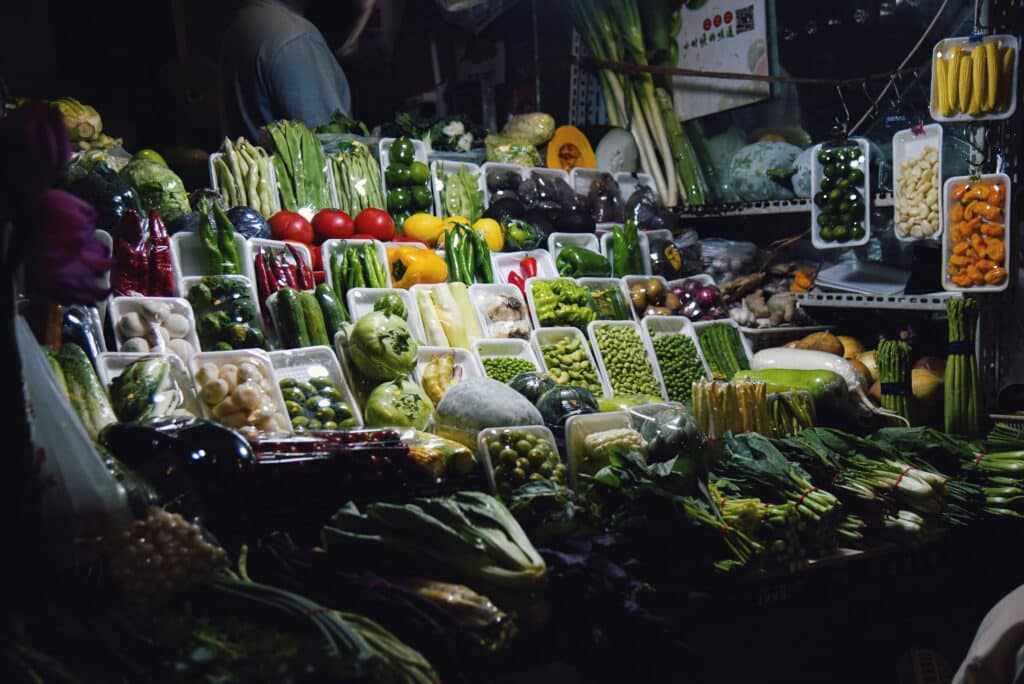Sounds of chatter, laughter, and the clatter of trays create a symphony of organized chaos. In the midst of this, have you ever stopped to consider the environmental impact of this daily routine? School lunches, while a necessary and often enjoyable part of the day, contribute significantly to environmental waste, particularly when it comes to packaging and food waste. 🌍

Enter the concept of eco-friendly school lunches. This might seem like a small change, but it’s a powerful one, capable of boosting efficiency, reducing waste, and promoting a greener and more sustainable future. 💡
As we delve into the world of green school lunches, we will explore a variety of innovative and practical ideas. We will discuss their benefits not only for the environment but also for the health and productivity of the students. At the end of this journey, you will be equipped with the necessary knowledge to transform your school’s cafeteria into a beacon of sustainability. 🌿
What Will Be Discussed?
Expect a comprehensive exploration of how to implement eco-friendly school lunches, with a particular focus on practicality and efficiency. We will start by understanding the problem – the environmental impact of traditional school lunches. We will dissect the elements that contribute to waste and pollution, setting the stage for the subsequent discussion on eco-friendly alternatives.
Next, we will explore innovative ideas that schools around the globe are implementing. These will range from biodegradable lunch boxes to zero-waste initiatives. We will also examine the implementation of these ideas, discussing the potential challenges and effective solutions. 🚀
Benefits Beyond the Environment
While the environmental benefits of eco-friendly school lunches are the primary focus, we will also discuss other advantages. These include the potential for cost savings, the improvement in student health, and the enhancement of productivity and focus. 🍏
It’s no secret that healthier students are more productive students. As we explore the role of nutritious, eco-friendly meals in promoting better health, we will also touch on how this links to improved academic performance. We will provide research-backed insights into how green lunches can positively impact students’ cognition and focus.
Preparation for a Sustainable Future
Finally, we will discuss how adopting eco-friendly school lunches can help prepare students for a sustainable future. In a world increasingly defined by climate change and environmental concerns, these habits will form a cornerstone of a sustainable lifestyle. 🌎
By introducing students to the principles of sustainability at an early age, we can foster a generation that is conscious of their environmental impact and is prepared to make choices that benefit both them and the planet.
Ready to revolutionize your school lunch program and take a significant step towards sustainability? Join us as we dive into the fascinating world of eco-friendly school lunches and uncover how this simple shift can boost efficiency, improve student productivity, and help safeguard our planet for future generations. 🚀
Understanding the Concept of Eco-Friendly School Lunches
Implementing eco-friendly practices in schools is a pressing priority in today’s world. Among these practices, one that holds significant potential for sustainability is offering eco-friendly school lunches. This is not only about serving organic or locally sourced food, but it also involves how the food is served, the waste generated, and the energy consumed in the process. Understanding the concept of eco-friendly school lunches requires a technical and specialized approach.
Eco-friendly school lunches are primarily about reducing the environmental footprint of the food served in schools. It includes elements such as sourcing food locally to reduce transportation emissions, serving food in reusable containers to reduce waste, and using energy-efficient appliances in the kitchen. Apart from these, it also involves educating students about sustainable food practices, which contributes to a broader understanding of sustainability.
When implemented effectively, eco-friendly school lunches can have a positive impact on both the environment and the school community. It can boost efficiency by reducing waste and energy consumption, saving costs in the long run. It also promotes a healthier lifestyle among students, leading to improved productivity. Let’s dive deeper into the benefits and how to maximize productivity with these green ideas.
How Eco-Friendly School Lunches Boost Efficiency
The potential of eco-friendly school lunches to boost efficiency lies in their sustainable nature. By minimizing waste and energy consumption, these practices reduce the burden on the environment and the school’s budget. For instance, sourcing food locally reduces transportation costs and emissions, which is a win for both the school and the environment.
Furthermore, serving food in reusable containers minimizes the waste produced at the school. This reduces the amount of waste that needs to be disposed of, saving both money and environmental resources. On top of that, using energy-efficient appliances in the kitchen can significantly reduce energy consumption, which not only saves costs but also reduces the school’s carbon footprint.
Moreover, eco-friendly school lunches can also boost efficiency by promoting healthier eating habits among students. Consuming organic and locally sourced food can improve students’ health and cognitive functioning, leading to improved performance and productivity in the classroom.
| Traditional School Lunches | Eco-Friendly School Lunches | |
|---|---|---|
| Environmental Impact | High due to transportation emissions, waste production, and high energy consumption | Low due to local sourcing, reusable containers, and energy-efficient appliances |
| Cost | High due to waste disposal and energy costs | Lower in the long run due to savings from waste and energy reduction |
| Health and Productivity | Can be negatively affected by processed food | Enhanced by organic and locally sourced food |
To understand the impact of eco-friendly school lunches in a practical context, watch the video “Eco-Friendly School Lunches: A Case Study” by Green School Initiative on YouTube.
Maximizing Productivity with Green Ideas
Implementing eco-friendly school lunches can significantly enhance productivity in schools. By promoting healthier eating habits, these practices can improve students’ cognitive functioning, leading to better academic performance. Moreover, by reducing waste and energy consumption, they can also make the school operations more efficient.
However, maximizing productivity with green ideas requires a comprehensive approach. It involves not just changing the food served, but also transforming the overall food culture in the school. This includes educating students about sustainable food practices, encouraging them to make conscious food choices, and even involving them in the food preparation process.
Moreover, it also requires engaging all stakeholders – from school administrators to parents – in the process. By creating a community-wide commitment to sustainability, schools can ensure the long-term success of these initiatives.
To get started with implementing eco-friendly school lunches in your school, check out the video “Green School Lunches: How to Get Started” by Sustainable School Project on YouTube.
Innovative Green Ideas for School Lunches
There are several innovative green ideas that schools can implement to make their lunches more eco-friendly. One such idea is starting a school garden. This not only provides fresh, organic produce for the school kitchen, but it also serves as a valuable educational tool for students. They can learn about sustainable agriculture, composting, and the importance of biodiversity.
Another innovative idea is implementing a composting program in the school. This can help to reduce the amount of food waste that ends up in the landfill, and the compost produced can be used in the school garden. To make this process more engaging for students, schools can use interactive composting bins that allow students to see the decomposition process in action.
Furthermore, schools can also partner with local farms and food producers to source their food. This not only supports the local economy, but it also reduces transportation emissions. Plus, it provides an opportunity for students to learn about where their food comes from and the impact of their food choices on the environment.
For more green ideas for school lunches, watch the video “Innovative Green Ideas for School Lunches” by Eco Schools Network on YouTube.
Challenges and Solutions in Implementing Eco-Friendly School Lunches
While implementing eco-friendly school lunches has numerous benefits, it also comes with its challenges. These include higher initial costs, resistance from students and parents, and logistical issues related to sourcing and waste management. However, with careful planning and engagement, these challenges can be effectively addressed.
The higher initial costs can be mitigated by applying for grants and partnerships that support sustainability initiatives in schools. There are numerous organizations that provide funding for projects such as school gardens, composting programs, and energy-efficient kitchen appliances.
Resistance from students and parents can be addressed by providing education about the benefits of eco-friendly school lunches. This can include workshops, presentations, and hands-on activities that help them understand the impact of their food choices on the environment and their health. Moreover, involving students and parents in the planning and implementation process can help to build ownership and commitment.
Logistical issues can be addressed by creating a detailed implementation plan that includes factors such as sourcing, waste management, and staff training. It may also be beneficial to work with a sustainability consultant who can provide expert advice and guidance throughout the process.
To learn more about overcoming these challenges, watch the video “Challenges and Solutions in Implementing Eco-Friendly School Lunches” by Sustainable Schools Project on YouTube.
Conclusion
In this comprehensive journey we have taken together through the labyrinth of software engineering, we have elucidated some of the most intricate aspects of this fascinating discipline. From understanding the fundamentals of software engineering to unraveling the mysteries of various software design patterns, we have covered a wide range of technical areas, each more exciting than the next.
At the onset, we dove into the essentials of software engineering, underscoring its significance in the modern world. With an ever-increasing reliance on software solutions, the role of software engineering cannot be overstated. We then proceeded to explore the different stages of the software development life cycle (SDLC) 🔄, detailing each phase from the initial conception to the ultimate deployment and maintenance.
We took a closer look at various software development methodologies, emphasizing the unique features and benefits of each. Agile, Scrum, Waterfall, Lean, DevOps, and many more were given their due, enlightening readers about the various approaches available in the industry today. 🚀
We also delved into the world of software design patterns, providing a comprehensive breakdown of structural, creational, and behavioral patterns. By giving real-world examples, we simplified these complex concepts and highlighted their importance in solving recurring design problems. 🧩
The discussion on software testing techniques and tools was another enlightening portion of our journey. We emphasized the critical role of testing in ensuring software quality and reliability. Furthermore, we highlighted the importance of continuous testing and integration in the Agile and DevOps methodologies. 🛠️
In the realm of software maintenance and evolution, we stressed the importance of regular software updates and modifications to meet changing user requirements and technology advancements. We also touched on the importance of software documentation, both for end-users and development teams. 📝
With these in-depth insights and detailed discussions, it is hoped that the readers are now more equipped to navigate the world of software engineering. Whether you are an aspiring software engineer, a seasoned professional, or just someone with an interest in the field, we trust this article has been enlightening and valuable.
Remember, the world of software engineering is ever-evolving. Continuous learning is the key to staying updated and relevant. 🗝️ So, keep exploring, keep learning, and keep creating amazing software solutions.
We encourage you to share your thoughts, experiences, and questions in the comments section. 🗨️ Every shared idea or experience adds to the collective knowledge and brings new perspectives. If you found this article useful, feel free to share it with others. Knowledge shared is knowledge multiplied.
Finally, consider applying what you have learned here in your own projects. There is no better way to understand a concept than to put it into practice. 🔬 You may surprise yourself with what you can achieve.
Thank you for joining us on this journey. We hope it has been as enriching for you as it has been for us. Here’s to creating great software solutions that can change the world! 🌐
Useful references for further reading:
[1. Software Engineering: A Practitioner’s Approach by Roger S. Pressman](https://www.mheducation.com/highered/product/software-engineering-practitioner-s-approach-pressman-maxim/M9781259872976.html)
[2. Design Patterns: Elements of Reusable Object-Oriented Software by Erich Gamma, Richard Helm, Ralph Johnson, and John Vlissides](http://www.amazon.com/Design-Patterns-Elements-Reusable-Object-Oriented/dp/0201633612)
Stay connected and keep learning. 🎓
– Rodrigo Almeida 🖋️
PS: If you found this article useful, don’t forget to hit the like button 👍 and share it with your peers.
Disclaimer: This post may contain affiliate links. Please read my disclosure for more information.
Tags: #SoftwareEngineering, #SDLC, #Agile, #Scrum, #DevOps, #SoftwareTesting, #SoftwareDesignPatterns, #SoftwareMaintenance, #SoftwareDocumentation



